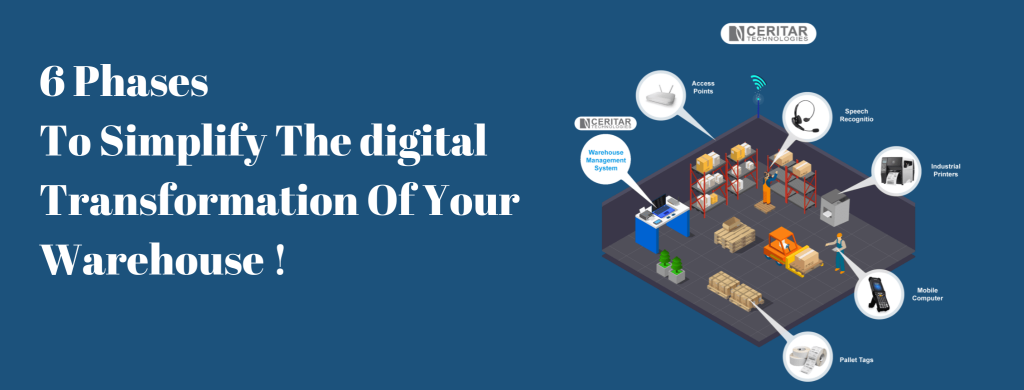
In the last decade, the world of e-commerce has changed dramatically. Then COVID-19 hit, and e-commerce sales grew nearly a third in just a few months. Many manufacturers and warehouse operators are still struggling to keep up with the demand.
This is why many companies realize they need more automation and visibility in their warehouse operations to adapt to this unpredictable world.
But today, 7͏5͏ % o͏f͏ w͏a͏r͏e͏h͏o͏u͏s͏e͏ o͏p͏e͏r͏a͏t͏o͏r͏s͏ view the process of building an autonomous warehouse as an elephant-sized task.
Following the different phases of a strategic approach to simplify the automation process for warehouse operators.
Phase 1: Improve Operations for Greater Individual Worker Productivity
The goal of the first phase is to gain control of basic business operations across all inventory processes. Start by focusing on simple solutions that increase individual worker productivity to get a quick return on investment (ROI). Introduce mobile scanning that accurately reads 1D and 2D barcodes on the first scan every time, or even multiple barcodes with a single trigger pull – even if labels are dirty, damaged or far away. Warehouse operators should also consider intuitive mobile computer or printer operating systems (OS).

Phase 2: Connect Workers for Greater Team Productivity and Workflow Conformity
The next step to optimizing technology investments is leveraging task-specific devices and form factors, such as wearable devices, handheld mobile computers, tablets or mobile printers, to capture data and improve visibility throughout warehouse operations.
To maximize the efficacy of using mobile devices, you should make your warehouse well connected by the implementation of an advanced Warehouse Management Solution. Ceritar’s innovative WMS solutions leverage the latest technologies and creative development in order to facilitate operations scheduling, achieve 99% accuracy in your orders, and simplify workload management.

Phase 4: Integrate for Greater Asset Visibility and Utilization
Phase 4 introduces sensor-based data collection. Automated data capture gives a more complete, real-time view of physical operations. With a radio-frequency identification (RFID) system though, tagged goods are counted as soon as they pass through dock doors with a fixed RFID reader in the portal areas.
Phase 5: Be Responsive for Best Next-Move Guidance and Decision-Making
In this phase, orchestration and integration of real-time locating systems (RTLS) with the WMS and other management systems are achieved, allowing operators to automate what can be automated and optimize the physical flow of products from receiving through shipping using real-time edge data.
Phase 6: Predict and Adapt to Proactively Improve Performance
Finally, once data intelligence systems are deployed throughout the warehouse, companies can begin to use data analytics and artificial intelligence (AI) to uncover ways to improve their processes even further, whether that’s by updating their warehouse design or perhaps changing employee workflows.
Do you want to speed up the digital transformation of your warehouse?
Nuage Technologies is here to help you.
